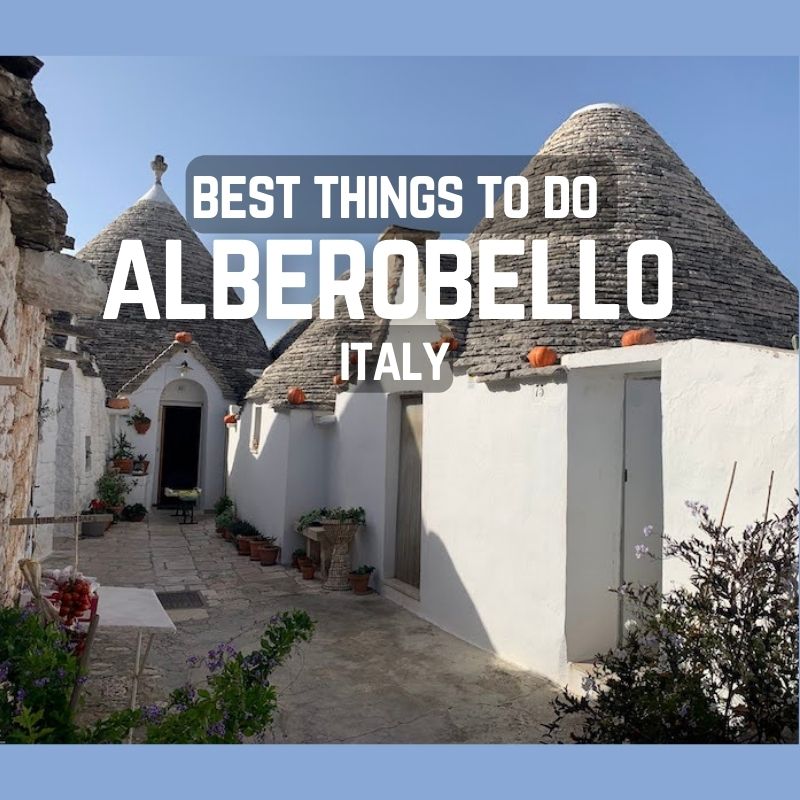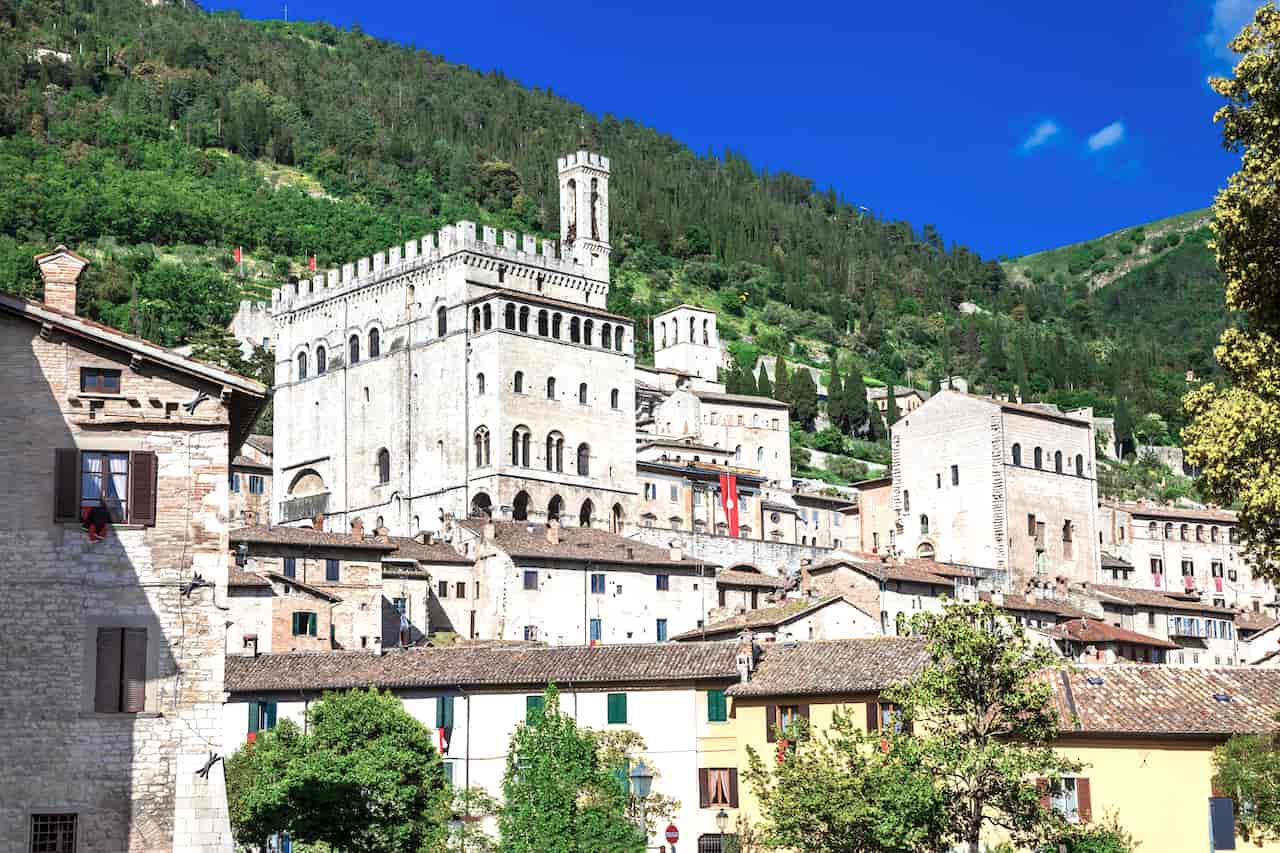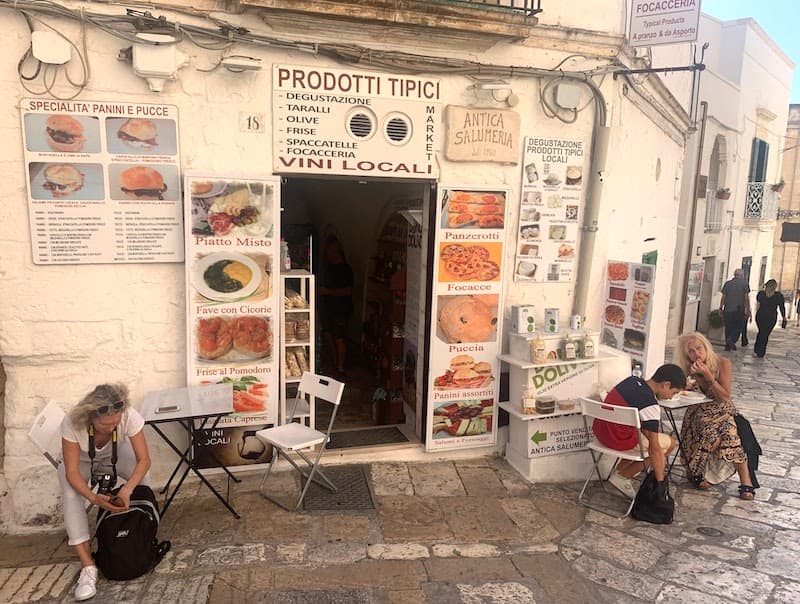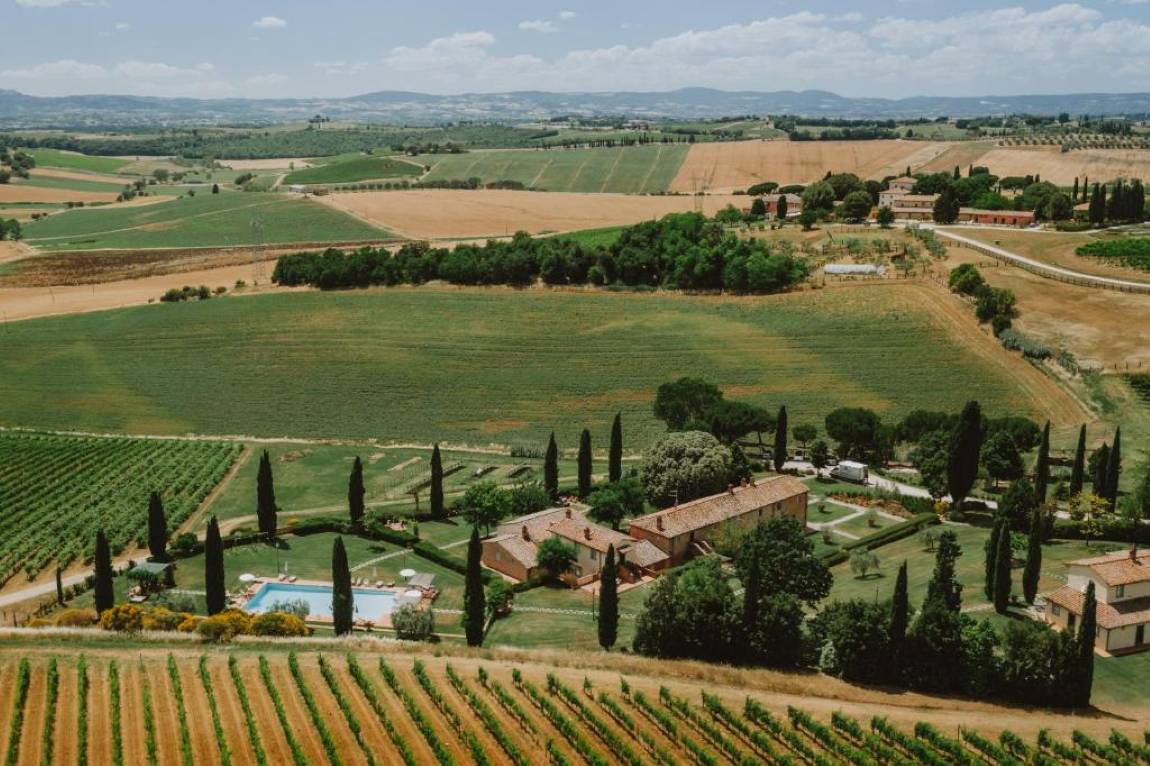Warning: These 15 Sicilian Desserts Will Make You Crave Sicily!
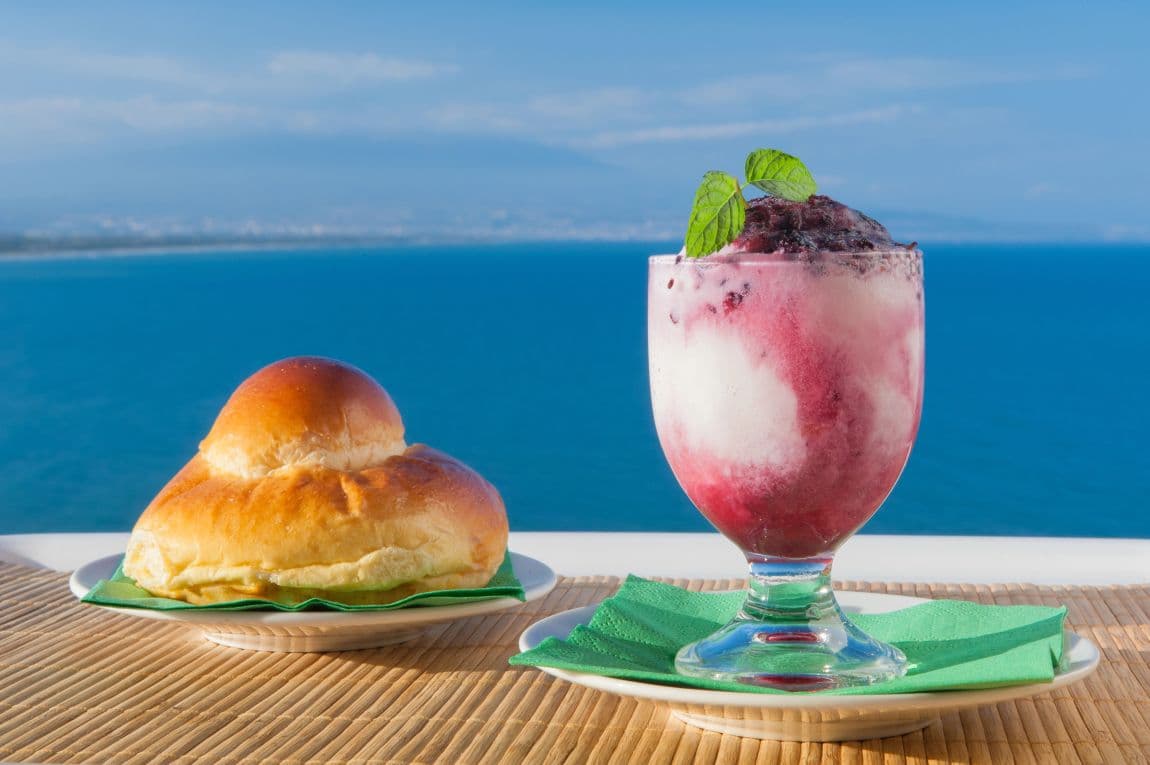
From cannolo and cassata to granita, explore the 15 best traditional Sicilian desserts that make Sicily a paradise for every sweet tooth.
Sicily isn’t just about stunning coastlines, ancient ruins, and sun-soaked piazzas—it’s a paradise for anyone with a sweet tooth. On my epic road trip across Sicily, I explored countless towns and villages, but the highlight was the culinary journey through traditional Sicilian desserts. Each sweet tells a story, blending history, culture, and irresistible flavors that make Sicily unforgettable.
From creamy cannoli to the colorful cassata and almond-infused treats of Modica, these desserts are more than food—they’re edible pieces of Sicilian heritage. Every bakery, pastry shop, and café offered a new experience, making it impossible not to fall in love with the island through its desserts.
Here’s a guide to the top 15 traditional Sicilian desserts you must try on your Sicilian adventure.

THIS POST MAY CONTAIN COMPENSATED LINKS. PLEASE READ MY DISCLAIMER FOR MORE INFO.
1. Cannolo – best in Palermo
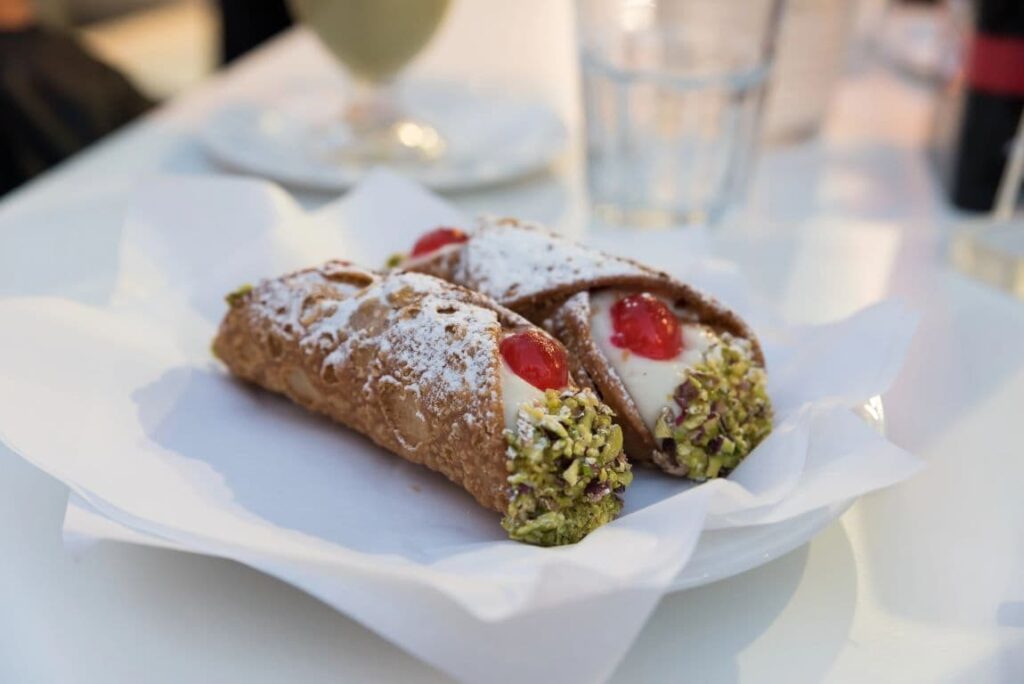
The cannolo is the undisputed king of Sicilian desserts, a pastry so iconic that tasting one in Sicily feels almost like a rite of passage. Its origins go back to Palermo during Arab rule, when sugar, citrus, and almonds first reshaped local cuisine. The name comes from canna, or reed, because the dough was once rolled around river reeds before frying.
The beauty of the cannolo lies in its balance of textures and flavors. The shell is fried until crisp and bubbly, then filled with creamy sheep’s milk ricotta sweetened with just enough sugar. Depending on where you are, you might find the filling flavored with cinnamon, vanilla, or orange blossom, and finished with crushed pistachios, chocolate chips, or candied orange peel.
The secret to perfection is freshness. A true Sicilian cannolo is filled only when ordered, so the shell stays crunchy and never soggy. This is what makes the ones in Palermo legendary—the ricotta here is unbelievably fresh and rich. La Dolceria di Santa Caterina offers a beautiful setting in a former convent where tradition feels alive in every bite. Read more: 21 Must-Try Foods in Palermo That Will Blow Your Mind
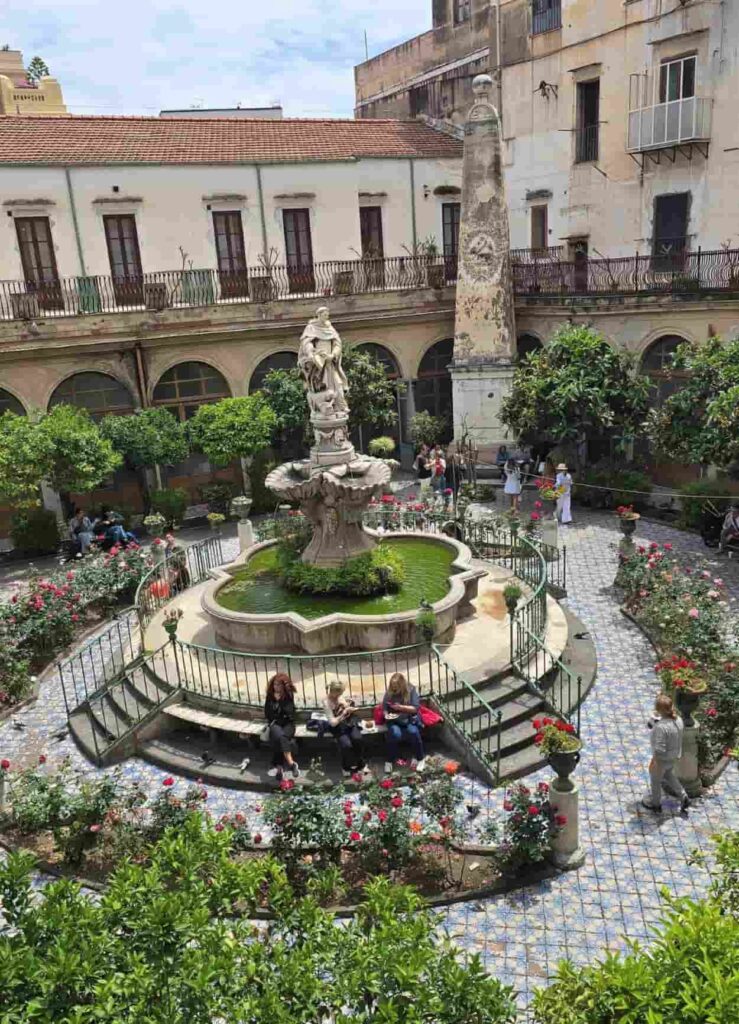
2. Cassata Siciliana – best in Palermo
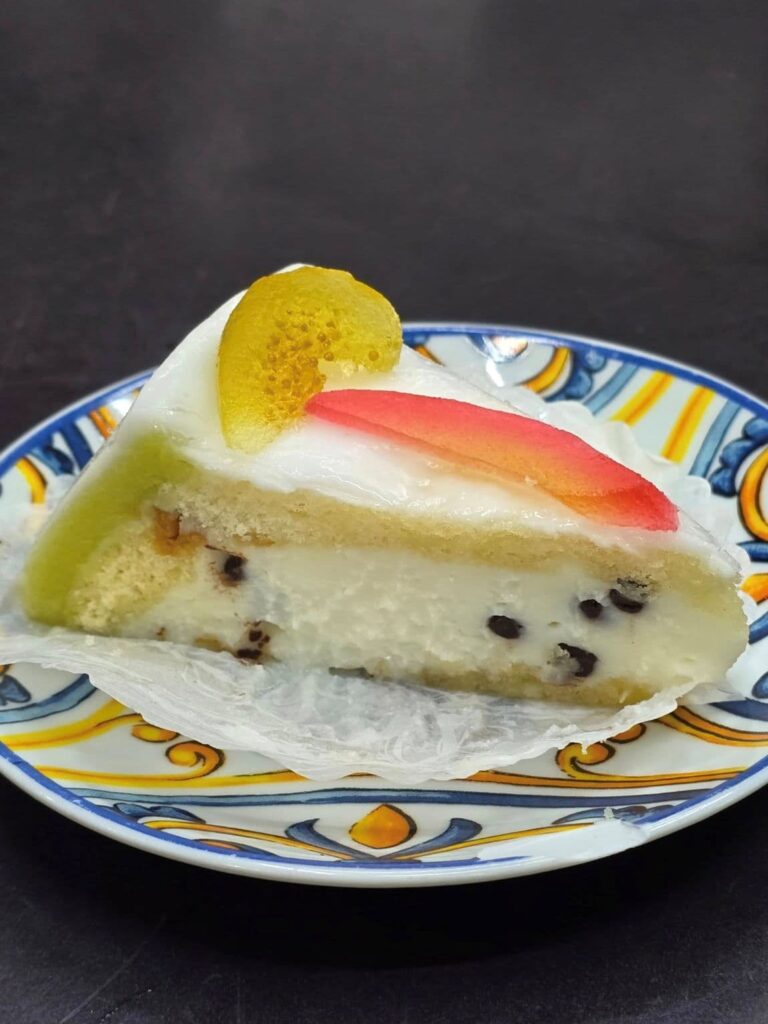
Cassata is Sicily’s showpiece dessert, flamboyant and festive, born in Palermo around the 10th century when Arab influence introduced sugar and almonds. Its name comes from the Arabic qas’ah, meaning bowl, referring to the mold used to shape it.
This is no ordinary cake. Layers of sponge are soaked in syrup or liqueur, then filled with sweet ricotta and candied citrus. The whole thing is wrapped in almond marzipan and topped with jewel-like candied fruit in bright greens, reds, and oranges. A simpler version, cassata al forno, is baked and less ornate, but the baroque-style cassata that appears around Easter is the one that truly dazzles.
The flavors are unmistakably Sicilian—creamy ricotta, zesty citrus, almond richness, and the almost decadent sweetness of candied fruit. It is bold, a little over the top, and absolutely unforgettable, just like Sicily itself.
In Palermo, cassata is everywhere, but some of the most exquisite are found at Pasticceria Oscar, Cappello, and the charming La Dolceria di Santa Caterina, where every slice feels like a celebration. Cassata is not just dessert—it’s Sicily’s story told through color and sweetness.
Eating a cannolo in Sicily isn’t just dessert—it’s a cultural experience, a little celebration of joy wrapped in pastry and cream.
3. Cassatina di Sant’Agata – best in Catania
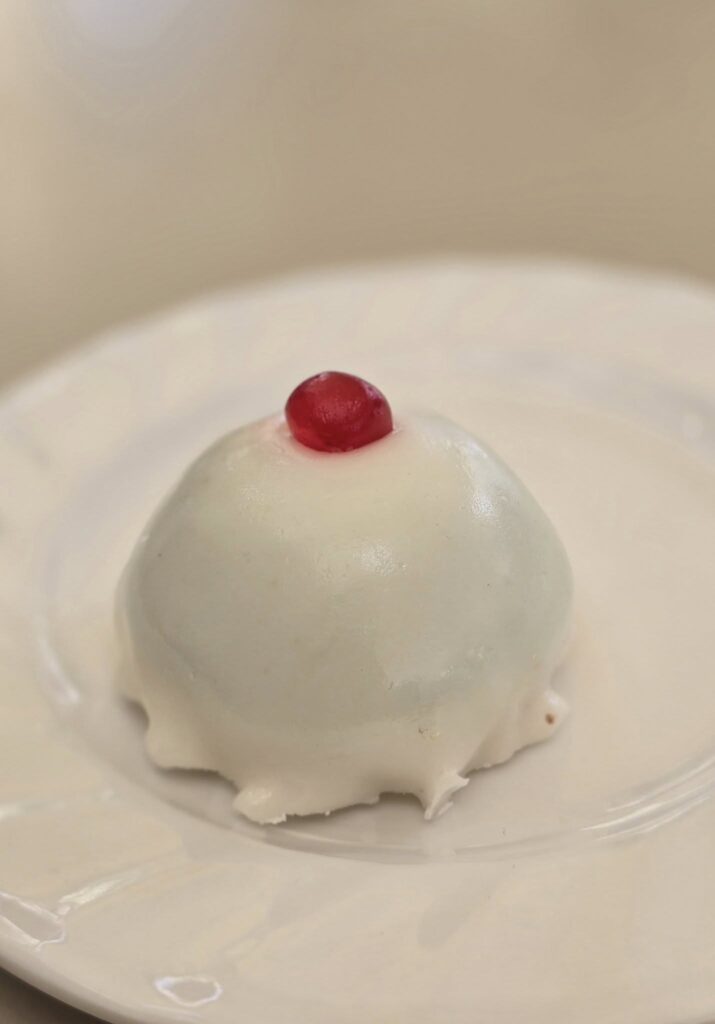
In Catania, pastry and devotion come together in the cassatina di Sant’Agata (also, cassatella di Sant’Agata). This miniature cassata is shaped like a small dome, created to honor the city’s patron saint, whose martyrdom in the 3rd century is remembered in the dessert’s form. The bright red cherry placed on top symbolizes her suffering, turning the cassatina into both a sweet and a symbol.
Inside, you’ll taste the familiar flavors of cassata—sponge cake layered with sweet ricotta, marzipan, and candied fruit—but in a more delicate, single-serve format. Cassatine are most visible during the grand February festival of Sant’Agata, when bakery windows across Catania fill with them. But they’re available year-round in some of the city’s finest pastry shops.
Eating one connects you to Catania’s identity and resilience. At places like Pasticceria Savia or Pasticceria Spinella, cassatine are prepared with a balance of artistry and reverence. They may be small, but they carry centuries of faith and flavor.
4. Frutta Martorana – best in Palermo and Monreale
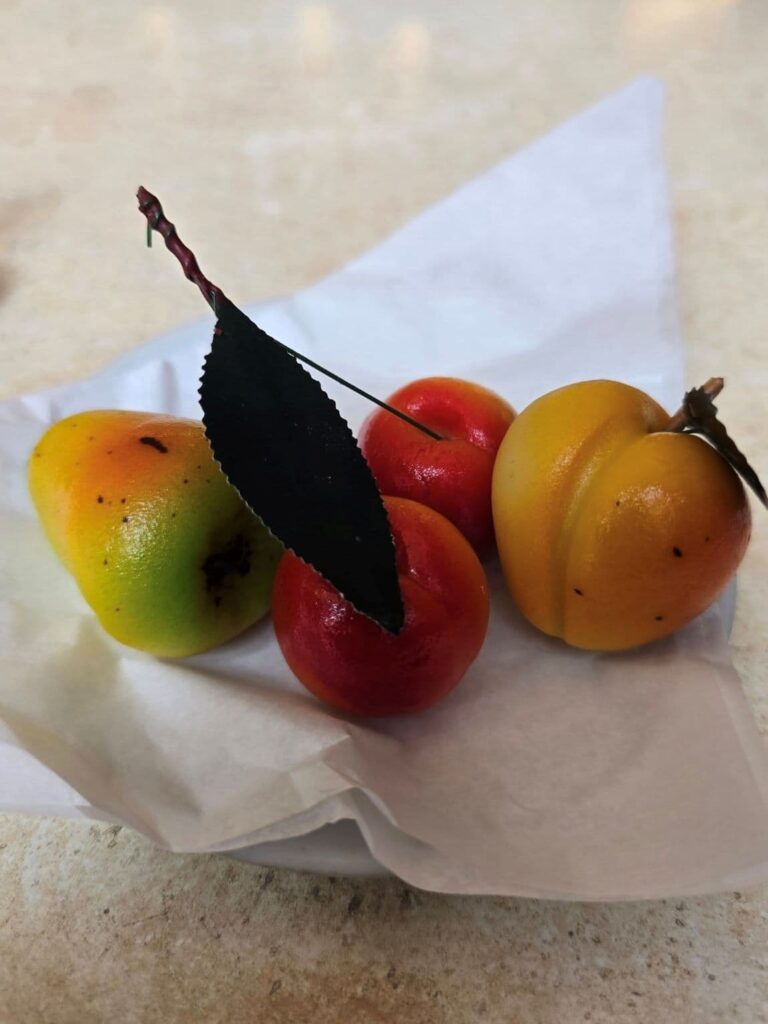
Few desserts are as charming as frutta Martorana, marzipan sweets crafted to look like real fruit. The story goes that in the Middle Ages, nuns at the Martorana convent in Palermo created them to decorate their barren fruit trees when a bishop visited. The tradition stuck, and today these colorful creations remain a beloved part of Sicilian culture.
Made from almond paste and sugar, each fruit is hand-shaped and hand-painted to look astonishingly real—figs, peaches, oranges, even vegetables like peppers or eggplants. Around All Saints’ Day in November, shop windows overflow with them, but you’ll find them throughout the year as well.
The flavor is classic Sicilian almond paste—sweet, nutty, and rich—but the real magic is in the artistry. They are edible works of art, playful yet deeply rooted in tradition, and they make a perfect keepsake or gift to take home.
Palermo is the heart of frutta Martorana, with places like Antica Pasticceria Cappello and La Dolceria di Santa Caterina offering stunning examples. In Monreale, the tradition is equally alive, with shops still honoring the convent’s heritage. To taste one is to bite into Sicilian history, disguised as a piece of fruit.
5. Cioccolata di Modica – best in Modica
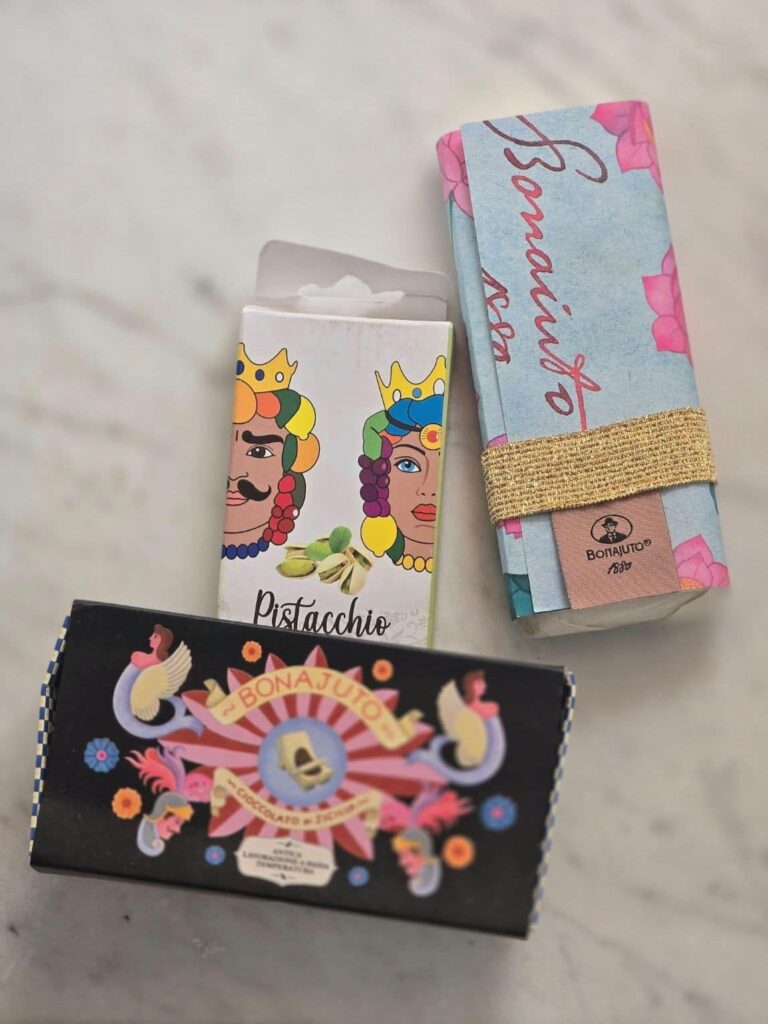
Among the best traditional Sicilian desserts, few are as unique as cioccolata di Modica, or Modica chocolate. This special treat is unlike any other chocolate in Italy. Its origins go back to the Spanish domination of Sicily in the 16th century, when the Spanish brought cacao from the Americas. The technique came from the Aztecs, and Modica preserved it while the rest of Europe moved on to smoother, industrial chocolate.
The secret is that Modica chocolate is made without conching, so the sugar crystals remain coarse. The texture is pleasantly grainy, and the flavors are more intense and pure. Classic bars use only cocoa mass and sugar, though over time locals began adding flavors such as cinnamon, vanilla, chili, or citrus zest.
Tasting it in Modica is a revelation. Walking through the baroque streets, you’ll find shops offering samples that crumble slightly in your mouth before releasing deep, almost rustic chocolate notes. The simplicity is what makes it extraordinary.
The city has protected this tradition with an IGP label, and some of the best producers include Antica Dolceria Bonajuto, one of the oldest chocolate shops in Sicily. Buying a bar here feels like bringing home a piece of edible history. Read more: A Guide to Modica, Sicily.
Modica chocolate is less a dessert than a cultural artifact. It’s a sweet reminder that Sicily doesn’t just follow trends—it preserves traditions, sometimes for centuries, until the world catches up again.
6. Iris Fritta (Iris Siciliana) – best in Palermo and Catania
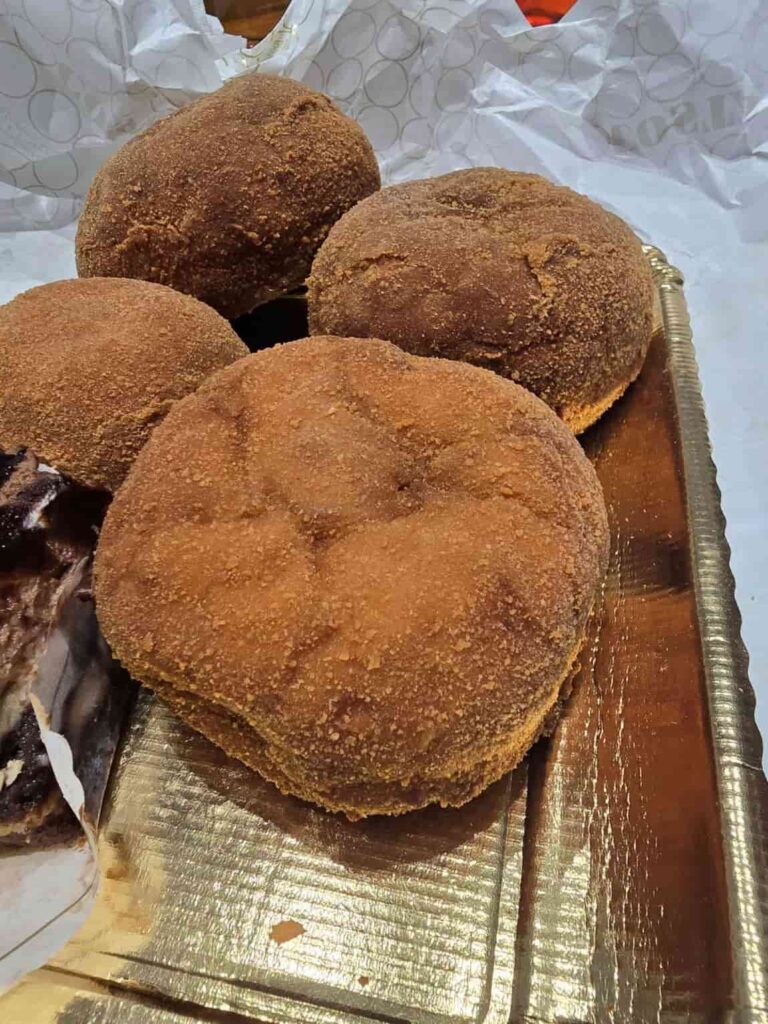
The iris fritta is a Sicilian pastry that feels indulgent from the first bite. It was created in Palermo in the 20th century by Antonio Lo Verso, a local pastry chef, who named it after Mascagni’s opera Iris. Originally baked, the fritta version—fried—became the more popular, especially as a breakfast or late-night snack.
An iris is essentially a soft, yeasted dough bun, filled generously with sweetened ricotta cream (sometimes chocolate or custard), then breaded and deep-fried until golden. The outside is crisp, while the inside is warm, soft, and overflowing with creamy sweetness.
In Palermo, irises are part of the street food scene, eaten hot and fresh at bars and bakeries. In Catania, you’ll find variations filled with chocolate or pistachio cream, echoing the city’s love of bold flavors. They’re filling, hearty, and often big enough to share—but you’ll want one all to yourself.
One of the most beloved spots to try them is Pasticceria Savia in Catania, right across from the Villa Bellini gardens. In Palermo, many local bars prepare them fresh in the morning, and they’re often sold out before noon.
Irises are less about refinement and more about comfort. They’re messy, satisfying, and absolutely Sicilian—a sweet that feels made for road trips, late nights, and mornings when you want something unforgettable with your espresso.
7. Genovese di Erice – best in Erice
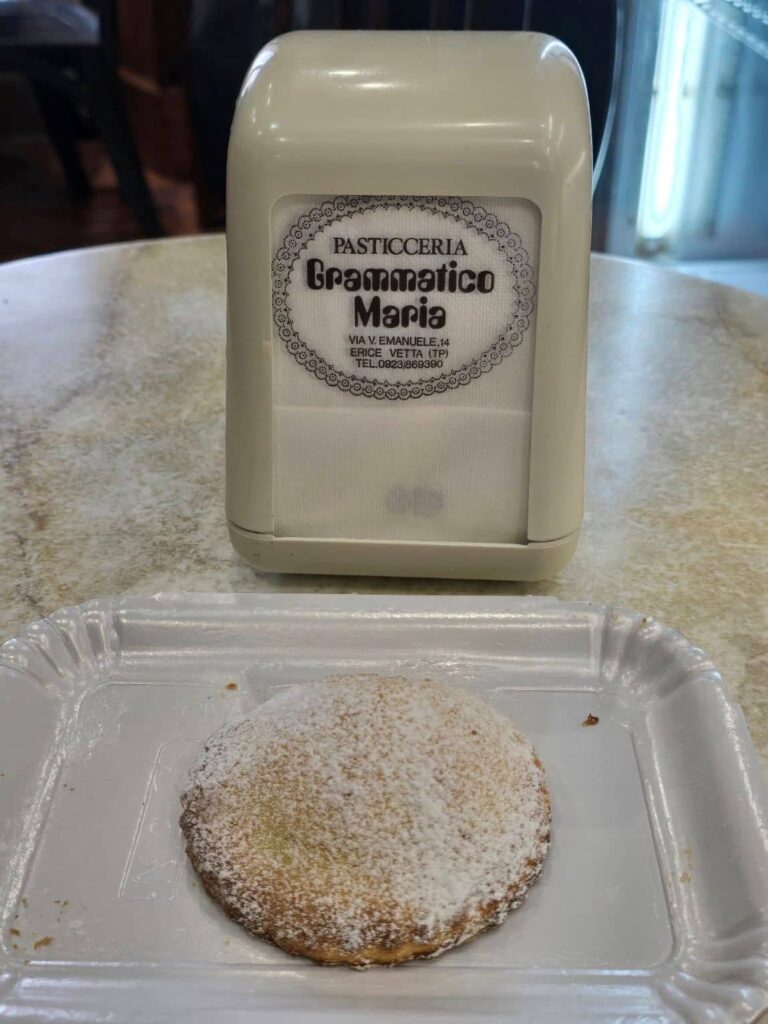
High above Trapani, the medieval hilltop town of Erice has its own pastry tradition—the genovese di Erice. These little dome-shaped pastries look simple, but they are packed with history and flavor. Their origins go back to convent baking, where nuns perfected sweets that would sustain pilgrims and celebrate feast days.
The genovese is made from shortcrust pastry, dusted with powdered sugar, and filled with warm ricotta cream or sometimes custard. They’re baked until golden, with the sugar melting slightly on top. The filling contrasts beautifully with the buttery pastry, creating a balance that’s both delicate and satisfying.
Eating one in Erice feels almost magical. The town’s cobbled streets, often shrouded in mist, set the perfect backdrop for enjoying a genovese with a strong espresso. Locals will tell you that the best are found at Pasticceria Maria Grammatico, a legendary shop founded by a woman who learned her craft from nuns. Her genovesi are so famous that people travel to Erice just for them. Read more: A Guide to Erice, Sicily.
The pastry may look humble, but it’s one of those desserts that captures Sicily’s genius for turning simple ingredients into something unforgettable. Sweet, warm, and comforting, a genovese di Erice is best eaten fresh from the oven, with sugar still dusting your fingertips as you explore the winding streets of this enchanting town.
8. Cassatelle di Ricotta – best in Trapani and western Sicily
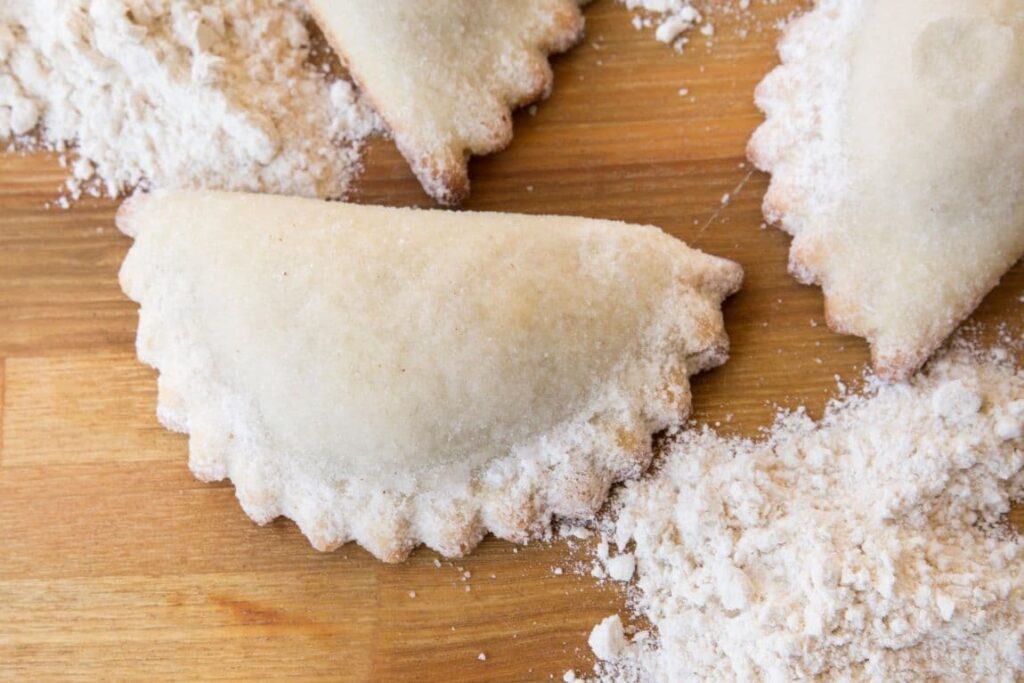
Cassatelle di ricotta are among the most comforting of all Sicilian pastries. They come from the Trapani area, especially towns like Custonaci, and are beloved as a rustic sweet often tied to Easter traditions. Imagine a half-moon of pastry, lightly fried, filled with creamy ricotta, sugar, and chocolate chips. The pastry is often flavored with Marsala wine or lemon zest, giving it a subtle kick beneath the sweetness.
When you bite into one, the shell is crisp and golden, while the filling is warm, rich, and indulgent. Some versions are dusted with powdered sugar, others glazed with honey. While fried cassatelle are most common, baked versions exist too, offering a lighter alternative.
Eating cassatelle in western Sicily feels like tasting tradition passed down through generations. They’re not just sold in pasticcerie but also appear in family kitchens, often prepared for celebrations or to welcome guests. In Custonaci and Trapani, cassatelle are a source of local pride, and bakeries there craft some of the best on the island. Read more: A Guide to Trapani, Sicily.
Pair them with a strong espresso or even a sweet Marsala wine, and you’ll see why this simple yet decadent pastry belongs on any list of the best traditional Sicilian desserts.
9. Pecorella di Pasqua Siciliana – best across Sicily at Easter

The pecorella di Pasqua, or Sicilian Easter lamb, is less about indulgence and more about symbolism. These marzipan figures shaped like lambs are crafted from almond paste and sugar, sometimes filled with pistachio paste, and decorated with food coloring or icing. They’re called pecorelle because of their form—small lambs that symbolize innocence and rebirth during Easter.
The tradition is centuries old, rooted in Sicily’s convents, where nuns would make them for Easter celebrations. Today, they’re sold in pastry shops across the island in the weeks leading up to Easter. Though many people buy them as decorations or gifts, they’re also edible, offering the rich almond flavor typical of Sicilian marzipan.
Each lamb is unique, often hand-painted with details like green grass, red banners, or golden halos. Children especially love receiving them, and families display them on Easter tables before finally enjoying them together.
The pecorella di Pasqua is a reminder that Sicilian desserts aren’t just about flavor—they’re also about ritual and tradition. If you’re traveling around Sicily in spring, you’ll see them everywhere, from Palermo to Modica. Buying one makes you part of a custom that has sweetened Sicilian Easters for generations.
10. Sfincia di San Giuseppe – best in Palermo
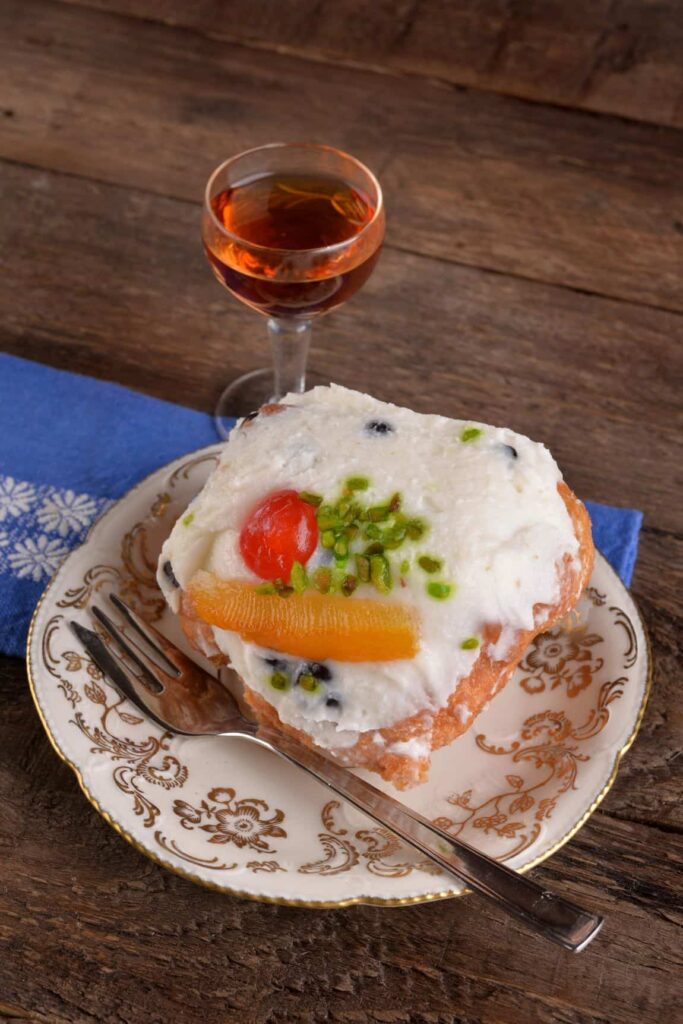
The sfincia di San Giuseppe is Palermo’s sweet gift to Father’s Day, celebrated on March 19. These pastries were originally prepared by nuns to honor St. Joseph, and they remain the traditional dessert of the day. Sfincia are light, airy fritters, similar to cream puffs, made from a dough that puffs up when fried.
What makes them irresistible is the topping. Once fried, they’re generously coated with sweet ricotta cream, often studded with candied orange peel, chocolate chips, or crushed pistachios. Unlike other filled pastries, sfincia are messy and overflowing—more like little clouds of sweetness than neatly packaged treats.
Walking through Palermo around St. Joseph’s Day, you’ll find pastry shops overflowing with them, but they can also be found year-round in some bakeries. The contrast between the airy fried dough and the rich ricotta makes them addictive, and every bite feels festive.
In Palermo, places like Pasticceria Scimone and La Dolceria di Santa Caterina prepare sfincia that capture the city’s spirit—joyful, generous, and unapologetically sweet. Sfincia are the kind of dessert that demands you forget table manners and just dive in, savoring the flavors that celebrate both faith and indulgence.
11. Buccellato Siciliano – best at Christmas

The buccellato is Sicily’s quintessential Christmas cake, a ring-shaped pastry filled with dried figs, nuts, raisins, and sometimes chocolate or candied fruit. Its origins date back centuries, rooted in both peasant and aristocratic kitchens, where it symbolized abundance during the festive season.
The outer shell is made of shortcrust pastry, often decorated with intricate patterns or braided designs. Inside, the filling is rich and spiced, blending figs with almonds, walnuts, hazelnuts, and a hint of Marsala wine or cinnamon. The flavors are deep and warming, perfect for winter.
Every Sicilian family has its own recipe, and buccellati are often prepared at home during December. They also appear in pastry shops across the island, each version slightly different depending on the local traditions. In Palermo, the buccellato is particularly beloved, often gifted to friends and family during the holidays.
To eat a slice is to taste the Sicilian approach to Christmas—generous, fragrant, and filled with flavors that last long after the holiday is over. It’s less a dessert for tourists than one to share with locals, ideally paired with a glass of sweet wine while sitting around a festive table.
12. Pignolata al Miele – best in Messina
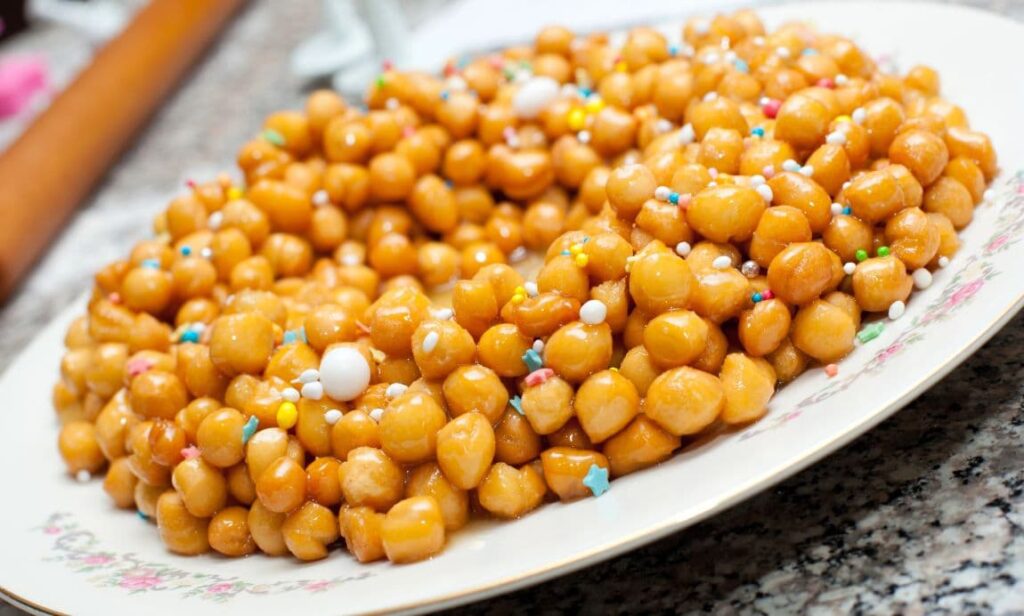
Pignolata al miele is a joyful, sticky Sicilian dessert made of small fried dough balls covered in honey. Its origins are tied to Messina, though it’s also popular in Calabria. The name comes from “pigna,” meaning pinecone, since the little balls are piled together to resemble one.
The recipe is simple but irresistible. Small pieces of dough are fried until golden, then coated in warm honey and sprinkled with colorful candied sprinkles or nuts. Sometimes, the balls are flavored with lemon or orange zest, giving a fragrant lift to the sweetness.
Pignolata (also sometimes called pignocata, pagnuccata, pignolata) is especially popular at Carnival, when festive foods take center stage, but it also appears at other holidays. It’s less about elegance and more about fun—meant to be shared with family and friends, eaten with your fingers straight from the plate.
In Messina, bakeries prepare large trays of it during Carnival, and you’ll often see it displayed in bright mounds. Its playful look and sticky sweetness make it a favorite for children, but adults love it just as much. Eating pignolata feels like being part of a celebration—one that’s noisy, colorful, and utterly Sicilian.
13. Paste di Mandorla – best everywhere in Sicily
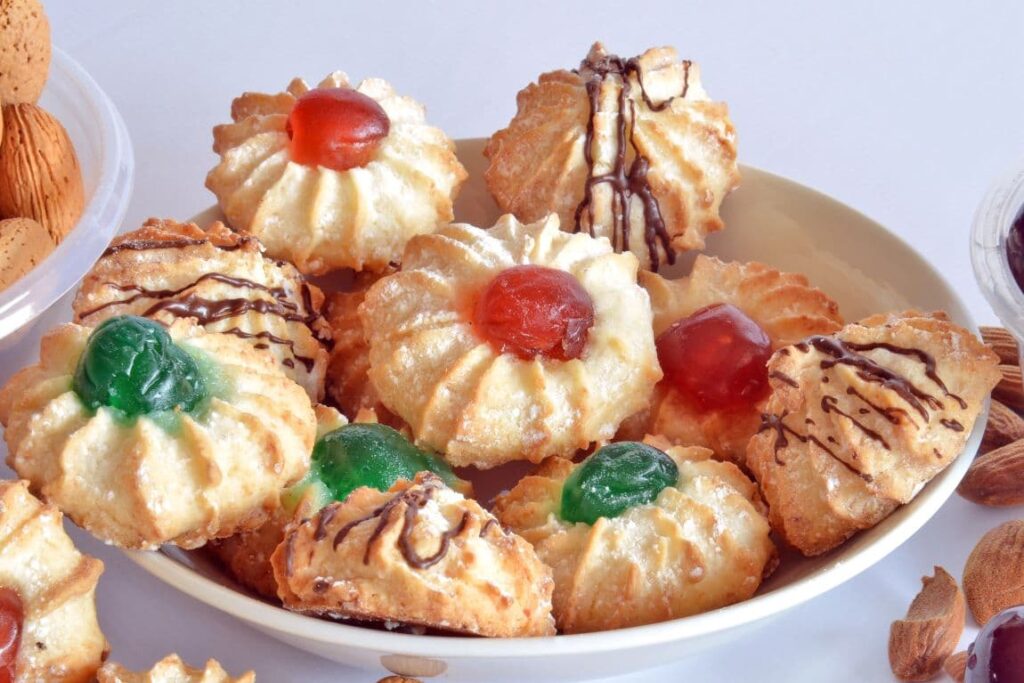
Few desserts are as quintessentially Sicilian as paste di mandorla, or almond cookies. These little sweets are made from ground almonds, sugar, and egg whites, sometimes flavored with lemon zest, orange blossom, or pistachio. They’re chewy, fragrant, and naturally gluten-free.
Almonds were introduced to Sicily by the Arabs, and pasta di mandorla became a convent specialty, prepared by nuns for feast days. Today, you’ll find them in every pastry shop, often shaped into rounds, crescents, or decorated with whole almonds or candied cherries.
The texture is what makes them addictive—crisp on the outside, soft and chewy inside, releasing the pure, nutty flavor of Sicilian almonds. They’re light enough to enjoy with an afternoon espresso but rich enough to satisfy a sweet craving.
Every town has its own variation, but some of the finest come from Noto and Avola, areas famous for their almonds. Shops in Palermo and Catania also sell them in abundance, often packaged beautifully, making them a perfect souvenir.
Pasta di mandorla isn’t just a dessert, it’s a symbol of Sicilian simplicity—few ingredients, prepared with care, resulting in a sweet that has endured for centuries.
14. Granita – best in Catania and eastern Sicily
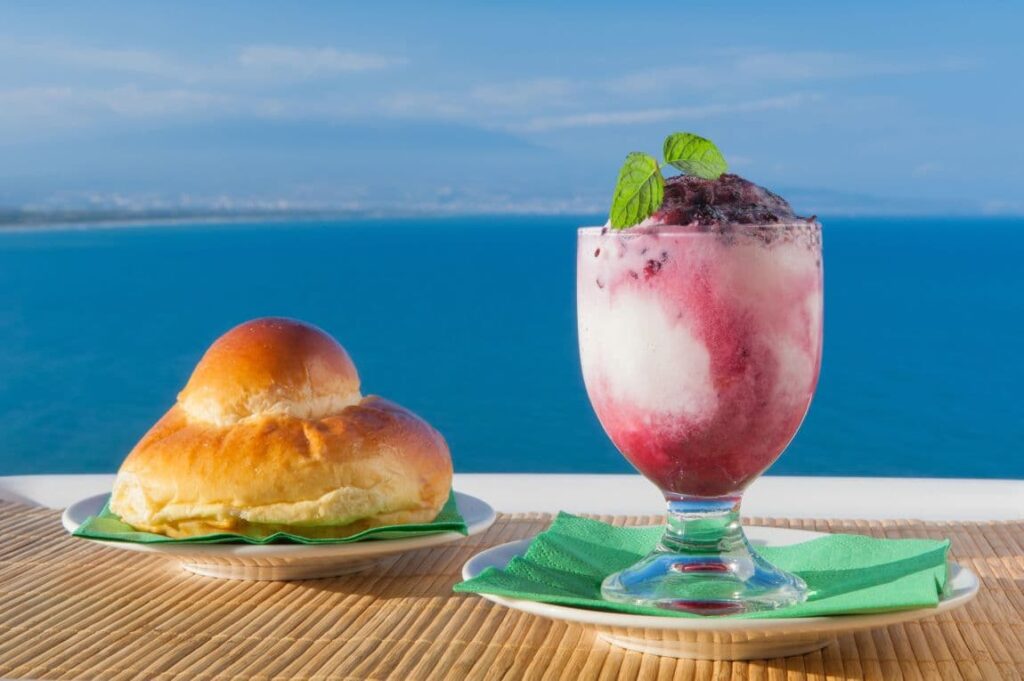
Granita is Sicily’s answer to gelato on a hot summer day. This semi-frozen dessert is made from water, sugar, and flavorings, churned slowly to create a texture that is smoother than a slush but more crystalline than sorbet. Its origins go back to Arab sharbat, flavored drinks cooled with snow from Mount Etna, stored in stone ice houses.
Today, granita comes in endless flavors, but the classics are almond, lemon, and coffee. Almond granita is creamy and nutty, lemon is sharp and refreshing, while coffee is rich and perfect with whipped cream. In Catania, pistachio granita is another favorite, showcasing the region’s famous Bronte pistachios.
Granita isn’t just a dessert—it’s breakfast. In eastern Sicily, especially in Catania, people eat it in the morning with a warm brioche bun. Dunking the bread into icy granita might sound unusual, but it’s pure Sicilian magic on a summer morning.
Some of the best granita can be found at Caffè Sicilia in Noto, famous worldwide, and at small bars in Catania, where locals line up early. Sitting at a café, brioche in hand, granita melting in the sun—you’ll feel like a true Sicilian. Read more: Granita Siciliana: Sicily’s Most Irresistible Dessert—Must Try!
15. Gelato – best everywhere in Sicily
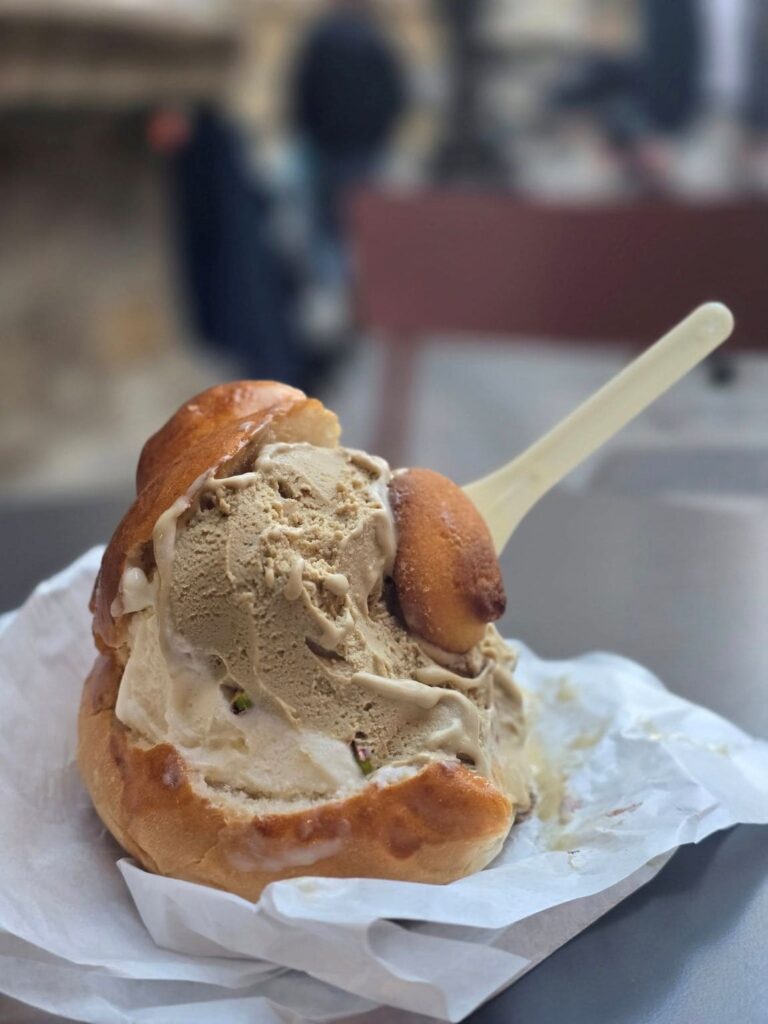
While Italy is famous for gelato, Sicily takes it to another level. The island’s gelato traditions are deeply tied to its Arab past, when sugar and citrus transformed local sweets. Sicilian gelato is often denser and creamier than its northern cousins, made with fresh local ingredients that shine in every bite.
Flavors highlight Sicily’s bounty—pistachio from Bronte, almonds from Avola, lemons from Syracuse, and chocolate from Modica. Seasonal fruits appear, too, from mulberries to figs, each reflecting what’s grown nearby. Many shops also serve gelato inside a brioche bun, known as “brioche con gelato,” a beloved summer staple that doubles as a meal.
Palermo is full of historic gelaterie, Catania boasts innovative flavors, and in Taormina and Noto, you’ll find artisanal shops perfect for evening strolls. Caffè Sicilia in Noto is legendary, while in Palermo, Primo Canto Gelateria offers amazing gelato con brioche with various flavors.
Gelato in Sicily is more than a sweet—it’s part of daily life. Whether eaten in the morning inside a brioche or savored slowly during an evening passeggiata, it’s the perfect way to end a day exploring the island.
Wrapping up Sweet Journey Through the Best Traditional Sicilian Desserts
My Sicilian road trip was more than a journey through breathtaking landscapes and ancient ruins—it was also a pilgrimage through pastry shops, convent kitchens, and family-run bakeries. From Palermo’s lively markets to the baroque streets of Modica, from the hilltop charm of Erice to the sunlit squares of Noto and Taormina, every stop revealed another treasure from Sicily’s dessert traditions.
What struck me most was how each sweet carries a story. Cannoli tell of Arab influence. Cassata is a festival on a plate, its bright colors echoing the island’s layered history. The grainy bite of Modica chocolate whispers of ancient Aztec techniques brought by Spanish rulers. Even the simplest almond cookie reflects centuries of devotion, often perfected within the quiet walls of convents.
Trying these desserts isn’t just about satisfying a sweet tooth. It’s about connecting with Sicily itself—its history, its resilience, its love of celebration. Each bite is a postcard of flavor, reminding you that food here is never just food, but culture, memory, and joy.
So when you plan your own Sicilian adventure, make space not only for temples, beaches, and hilltop towns, but also for bakeries and cafés. Seek out the classics, hunt down local specialties, and let yourself be surprised by sweets you never knew existed. Trust me—adding these best traditional Sicilian desserts to your bucket list will make your journey through Sicily unforgettable.
- The Most Luxurious Secret Castle Hotels in Italy: Romantic Escapes You Won’t Believe You Can Stay In - November 14, 2025
- Vienna, Where Time Waltzes — The Most Magical Things to Do in Vienna, Austria - November 8, 2025
- The Prettiest Castle Hotels in Scotland You’ll Want to Book Right Away - November 7, 2025



